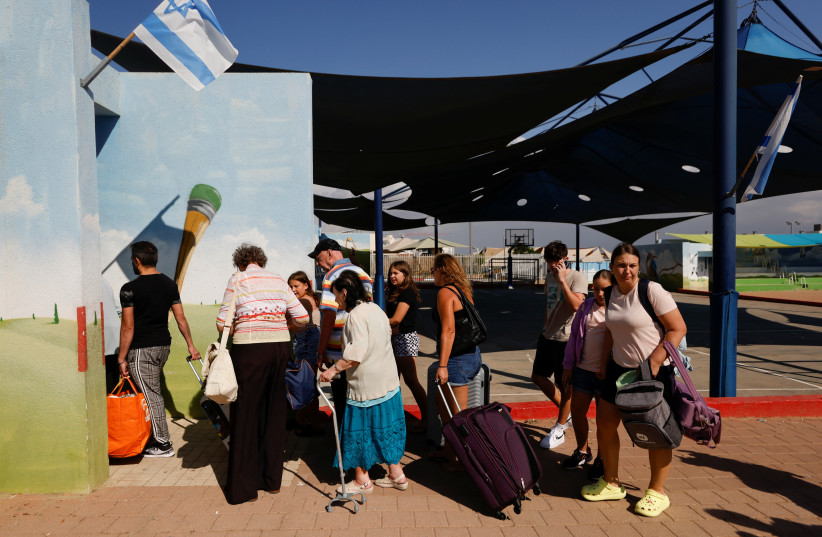Amidst the casualties of the October 7 war lie numerous victims: IDF personnel and their families, the missing, the abducted, the wounded, and other affected individuals, both physically and psychologically. Among this grim and extensive list are the displaced – individuals and families compelled to flee or relocate from their homes, seeking refuge in hotels or designated safe-havens.
The displaced people are transparent victims. It is imperative as a society that we refrain from relegating them to mere statistics. We must exhibit greater sensitivity to their needs and their plight and acknowledge that the vast majority of them are grappling with acute trauma. It is our societal obligation to recognize and remember them.
In hotels across the country, a significant number of displaced individuals, predominantly from the southern and northern regions, continues to reside. Many of them traverse the hotel lobbies like question marks (symbols of uncertainty). Unaware of what the future holds or how long their displacement will endure, some, particularly those from the north, remain uncertain about the fate of their homes – whether they have been razed to the ground or what remnants, if any, remain.
Questions linger regarding the fate of their personal possessions, which may have succumbed to the devastation wrought by missiles and projectiles aimed at their vicinity. Primarily, they grapple with the overarching question, “What lies ahead?”
Since the onset of the conflict, I have volunteered at a center for internally displaced persons in central Israel, where I conduct a weekly session on the Torah portion, integrating group dynamics processes. Witnessing the profound disillusionment and simmering resentment of the displaced towards bureaucratic inertia and societal indifference is deeply disconcerting.

They perceive themselves (based on their subjective experiences) as coddled individuals enjoying the amenities of hotel accommodation. They confide in me, expressing a sense of being ensnared in a “gilded cage,” yearning for the familiarity of home and, above all, a semblance of tranquility and security, having forfeited their privacy and fundamental right to peace amidst the conflict’s upheaval.
Emotional turmoil among evacuees
In this week’s session with the displaced at one such hotel, I opted to delve into the analysis of the Book of Esther. Commencing the lesson, I queried them about which verse resonated most with them from the scroll, eliciting varied responses. I shared that my chosen verse is: “For the Jews there was light, joy, gladness, and honor,” intending for the lesson to pivot on the theme of joy. Initially, I encouraged them to imagine how they envisioned experiencing joy during the forthcoming Purim holiday.
The question struck them like lightning on a clear day... Tears welled up in their eyes, and articulating a response proved arduous. Nostalgia and anguish permeated their recollections of past Purim celebrations, and envisioning the joy they might experience (if at all) this upcoming Purim proved challenging.
In response to their emotional turmoil, I steered the lesson towards an exploration of how Queen Esther, with astuteness and strategic acumen, cultivated joy. Focusing on the phrase “and Esther put on royalty,” I elucidated how Esther, through a calculated strategic process, perceived the essence of a kingdom deeply rooted in the concept of joy. It constituted a blend of textual-analytical inquiry and emotive-therapeutic exploration, allowing for a profound introspection into their psyche and the psychological resilience required to foster and nurture joy within themselves.
As Purim approaches and we gather for the festive meal, may we not forget those compelled to flee their homes, yet steadfastly clinging to every fragment of hope that our society must extend to them.
The writer is dean of the Faculty of Education at Bar-Ilan University.
